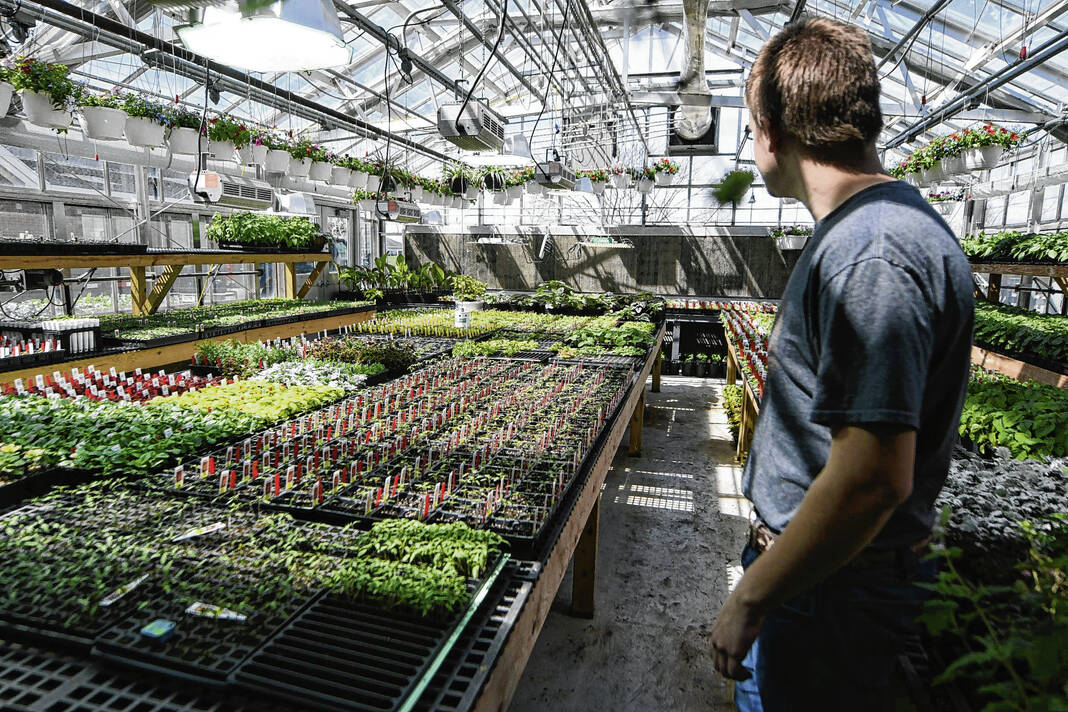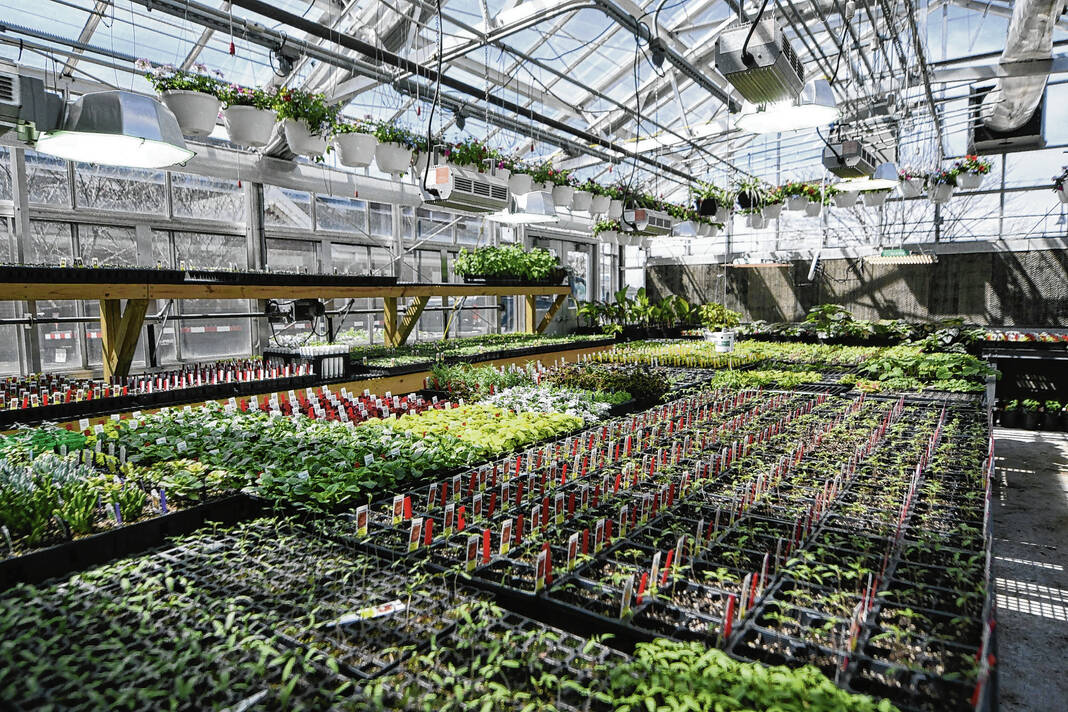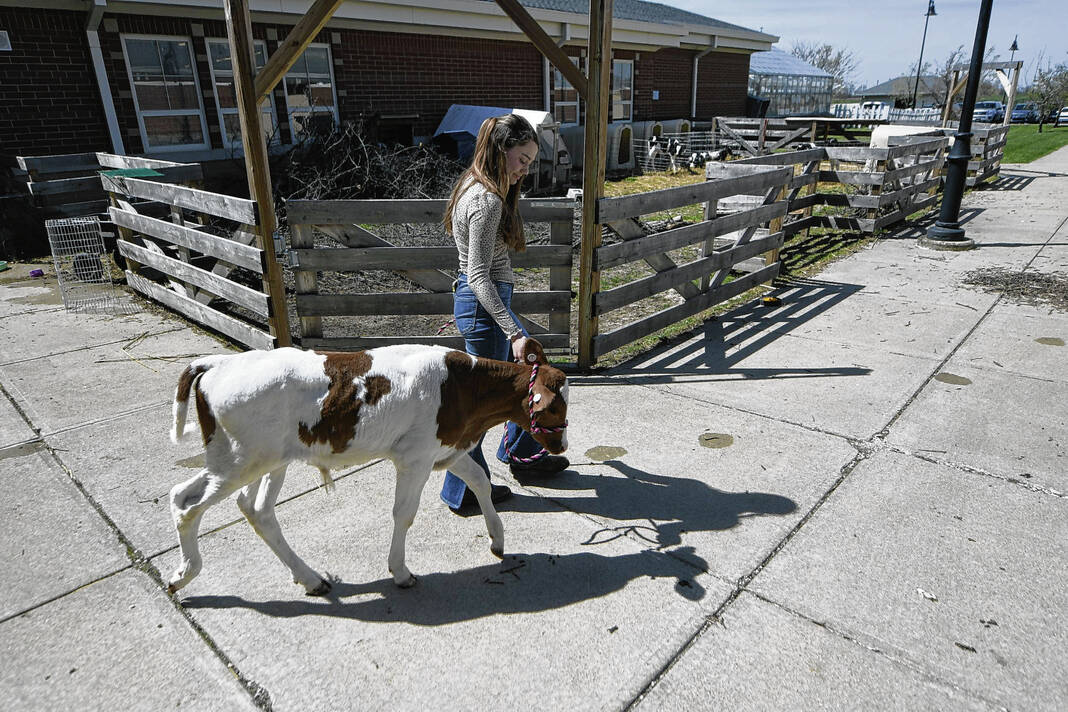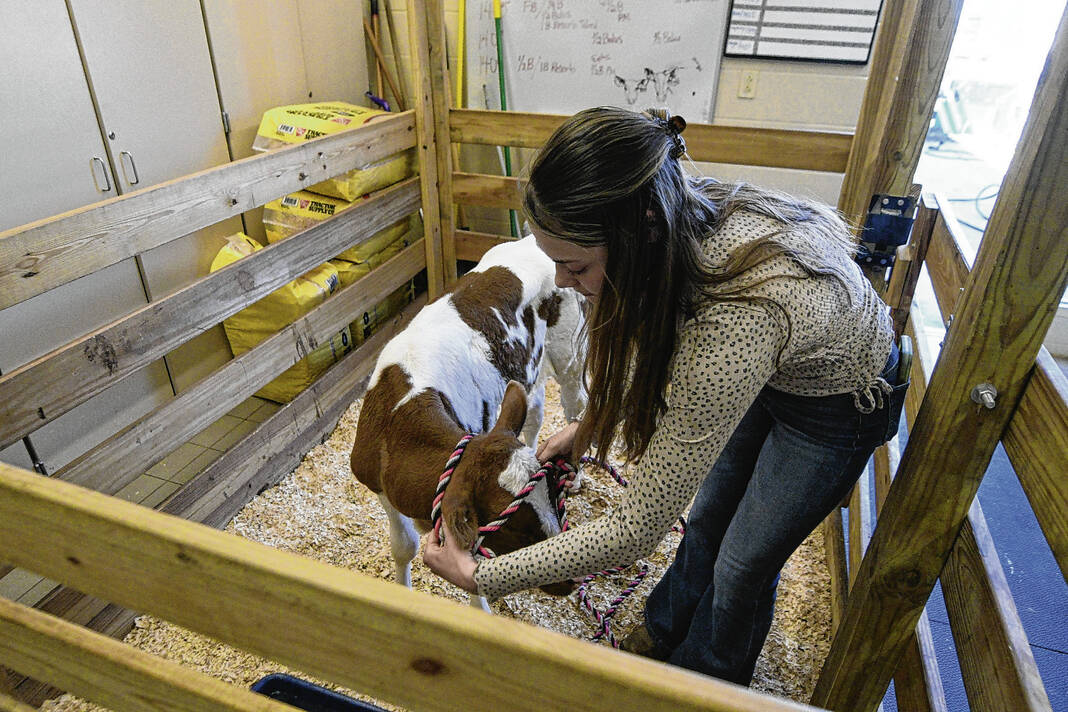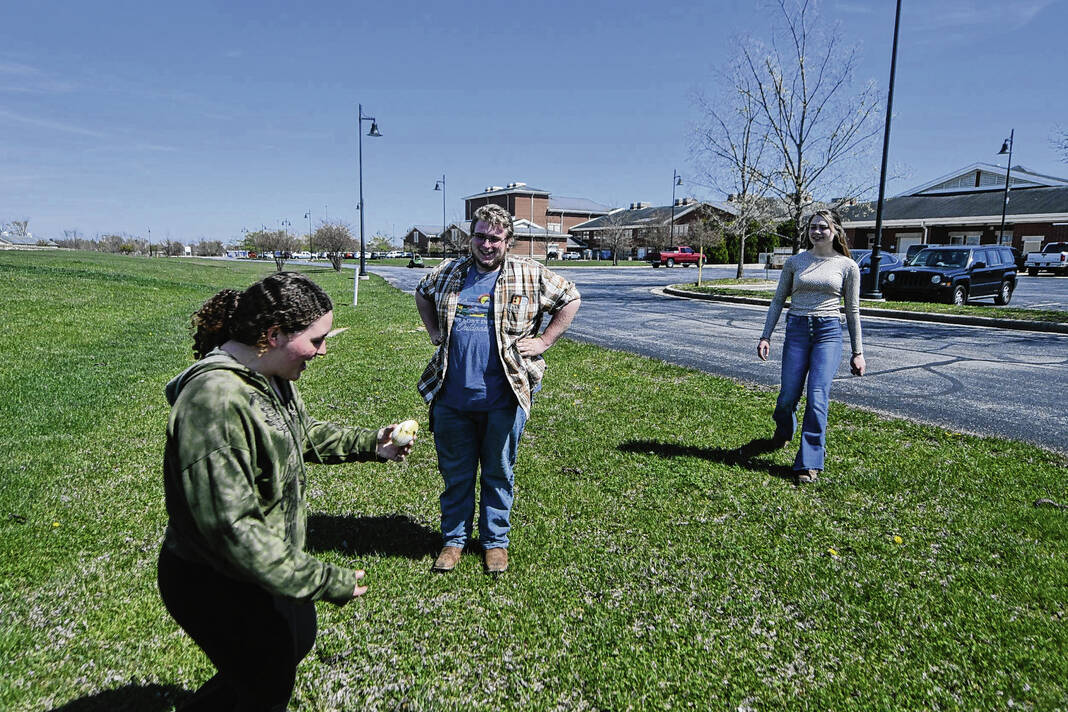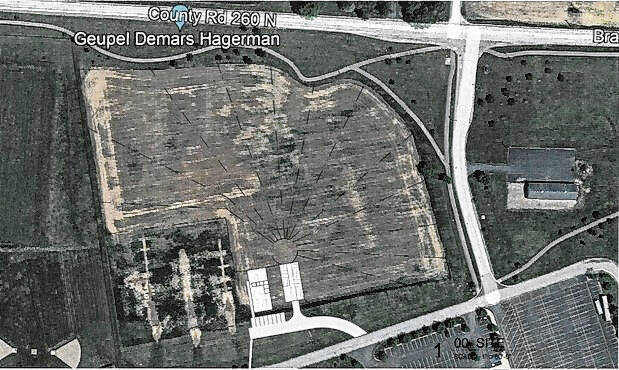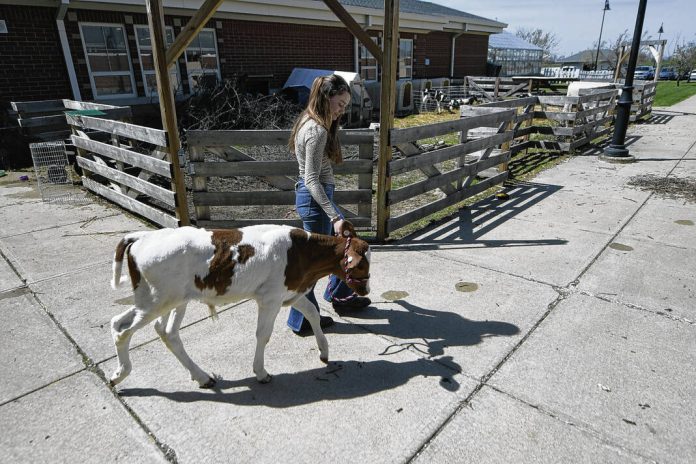
Franklin Community High School junior Kayleigh Sloop leads a calf outside the school.
ANDY BELL-BALTACI | DAILY JOURNALOn a nine-acre meat and vegetable farm outside Franklin Community High School, students have visions of new agriculture buildings and capstone research projects.
The school’s agriculture program has grown significantly in the four years since the farm started in 2019, when there were 10 active FFA members and about 100 students across all of its agriculture classes. The program now has about 300 students, said Alicia Geesey, agricultural science teacher and FFA advisor.
In the past year, those students have ramped up a farm-to-table program, turning squash grown and chicken raised into fresh servings of vegetables and chicken noodle soup in the school’s cafeteria. The farm now has a greenhouse with an aquaponics system to grow lettuce and raise fingerling fish, which may also make it to students’ cafeteria trays. The farm’s animals now include six calves, 20 egg-laying hens and a batch of 100 meat chickens arriving Thursday, she said.
Buildings in the works
Development of the Franklin Agricultural Center for Education, or ACE has been in the works since 2021, when Franklin Community School Corporation secured a $72,497 Farm-to-School grant from the United States Agricultural Department. But senior Jasper Carter said he’s hopeful students will be able to break ground on an estimated $250,000 barn, one of two buildings in the ACE, by the end of the 2023.
The building, which will be located just north of the high school on what is currently an empty field, will measure 40 by 80 feet to house livestock, feed and equipment, according to school documents.
Another slightly larger building will include space for processing garden vegetables and fruit, a classroom and lab to handle and study livestock and a walk-in cooler. Although exact costs haven’t been determined, the building will cost more than the barn and Geesey said she doesn’t expect it to be ready for groundbreaking for at least a year or two.
The budget for the barn is almost fulfilled because of fundraising efforts. So far, $175,000 has been donated for student use in the Johnson County Community Foundation fund and the agriculture program’s bank account has accumulated another $30,000 from donations. A local partner has agreed to match donations up to $50,000 until June 1, Geesey said.
“We’ve gotten grants from things going in the building and the garden but (funding for) the actual building is completely from donations,” she said. “It’s been community members, businesses, alumni have gotten the word out and are chipping in. We’ve done a great plant sale every spring and have put the proceeds from the plant sale into this building.”
The fundraising efforts have extended beyond Franklin, Carter said.
“This past fall we went to a granary in Kokomo where farmers can store grain or sell it. We made goodie bags and talked to farmers in our county about our program. We told them about doing a grain donation and taking it to Kokomo and then the revenue they would’ve made from a load of corn or soybeans they can donate to us,” he said.
Capstone opportunities and future plans
While the barn and food processing buildings are the two largest structures planned for the ACE, Geesey and the program’s students will use donations to fund development of the farm in several areas.
Plans for the ACE facility include a hoop house for wintertime vegetable production, a two-acre vegetable garden and one-acre orchard, one acre for crop experiments and demonstrations, four acres for rotationally-grazed pasture and equipment storage and resources for potential off-site crop or livestock production, according to school documents.
The farm’s development has been a benefit for students who may not get other opportunities to be on a farm, said Breaunna Lapier, a sophomore.
“Lots of kids at our school live in urban communities and neighborhoods and don’t have the square footage and so you don’t have the opportunity to own these animals or even be involved in anything with these animals until starting FFA,” Lapier said. “It’s really good to teach our community and younger generations about what is actually going on throughout the ag world and how we get our food.”
Students will see expanded opportunities within the agriculture program with capstone projects, which will start next year. The research projects will be open to seniors and will help fulfill a graduation requirement. Those students will be able to finish their research projects without leaving the school campus, thanks to the farm, Geesey said.
“Whatever they find most interesting in the ag industry they could kind of focus on and I will walk them through the course of how to complete actual research and collect data,” she said. “By May, they will have completed a research project.”
Students can still go outside Franklin to fulfill the requirements of the project, however. One student, for example, wants to be a veterinarian and will interview veterinarians across Indiana to complete her project, Geesey said.
The capstone project and other agricultural opportunities will help students develop an interest in careers in the field, said Norman Tuholski, a junior.
“We’ll come up with a research idea to do studies on it and experiments with it to better enhance our ag opportunities,” he said. “I grew up on a small livestock farm, but the department gave me a base to be able to broaden my research on livestock and do tests and figure out what feed works best for growing livestock. It has helped me develop an interest in plant science areas, and it helped me with my speaking skills and communicating with other people.”


